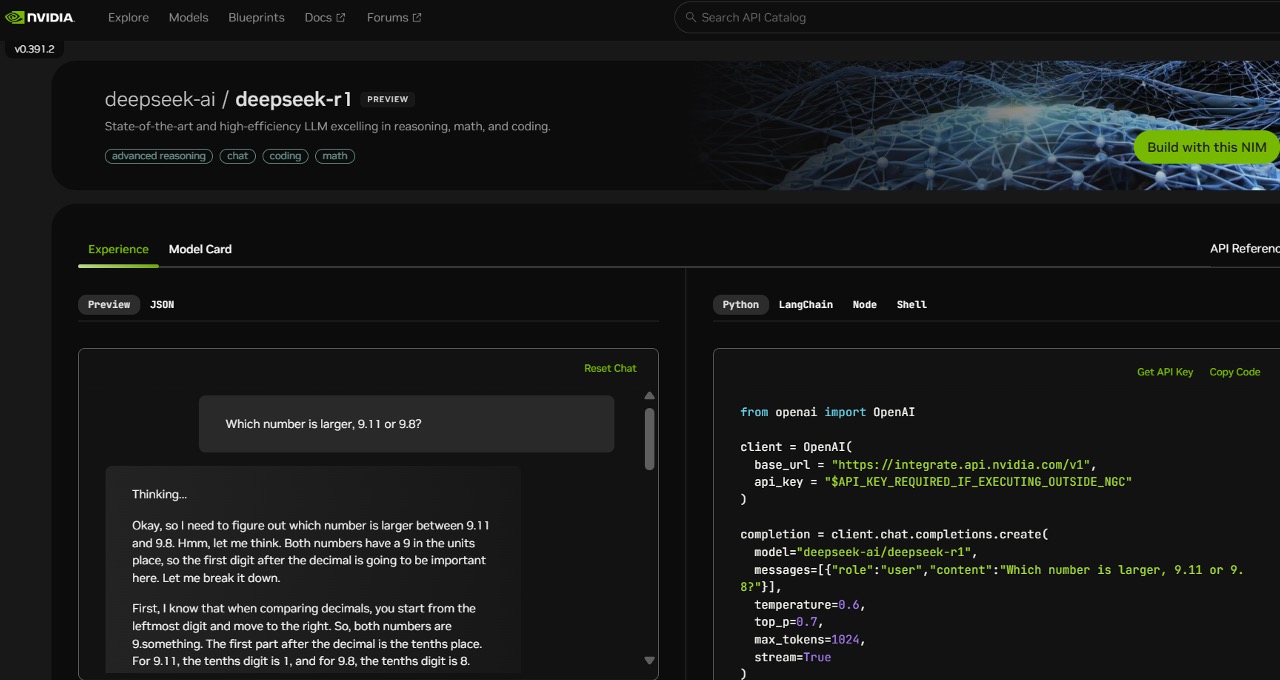DeepSeek: The Whale in the Open-Source Sea
Even with the pace AI is moving, DeepSeek-R1 shocked everyone. It took what was revolutionary and state-of-the-art a few weeks before and made it cheaper, more accessible, and most of all open-source. DeepSeek-R1 is basically a reasoning model developed by the Chinese company Deepseek.
Many things have already been written about this model, but I wanted to write my take, focusing on what is interesting for me. One of the most fascinating parts is that Deepseek, a Chinese company, has achieved what OpenAI had started the journey to do all along: a reasoning “open AI”!
One of the most important features of DeepSeek-R1 is that it is open source. It is released under the MIT license, making its technology and research publicly available. They also released the research paper, and people are replicating the research and trying the methodology in new places.

Also, DeepSeek-R1 is very cost-effective: training the model is 95% less expensive than its competitors, and its API costs just $0.55 per million tokens—2% of the cost of OpenAI O1. This new cost is on a disruptive level, making the use of reasoning models feasible for most businesses.
What’s more, they even have distilled models with similar reasoning capabilities that run on much smaller hardware. Basically, an O1-mini on your computer. They released a wide range of distilled models ranging from 1.5B to 70B that could provide GPT-4-level performance for most tasks on customer GPUs.
The Rise of DeepSeek-R1
When the news first broke about DeepSeek-R1, an open-source AI model developed by a Chinese startup, it initially seemed like just another run-of-the-mill product launch. New AI models appear almost weekly, each touting itself as the “next big leap.” But then, DeepSeek-R1 did something different: it garnered rapt attention across the tech community for approaching—and sometimes matching—OpenAI’s more established models in tasks like mathematics and coding, all on a fraction of the budget and compute.
DeepSeek, the Chinese AI startup, shocked the world after unveiling an AI model last week that rivals leading models like OpenAI’s o1, while claiming it cost far less to develop and required far fewer Nvidia chips—and giving it away for free.
The Open-Source Movement
The current moment is deeply ironic. DeepSeek released its AI model as open-source, meaning the company allowed researchers, developers, and other users to access the underlying code and its “weights” to use, modify, or improve. That sounds a lot like what OpenAI said it would do when it was founded in 2015 as a nonprofit company that shared its research and techniques openly. But OpenAI is now “by far the most closed in every way possible.

Though DeepSeek did not release the data it used to train its R1 model, there are indications that it may have used outputs from OpenAI’s o1 to kick-start the training of the model’s reasoning abilities. This process of analyzing and learning from another model’s outputs is sometimes referred to as “reverse engineering.”
The Impact of Open-Source Development
Open-source developers have been reverse-engineering OpenAI models like O1 for months. DeepSeek’s efforts make it clear that models can self-improve by learning from other models released by OpenAI, Anthropic, and others—which puts those companies’ existing business models, cost structures, and technological assumptions at risk.

In addition, DeepSeek’s success shows that open-source developers don’t even have to figure out the entire secret recipe created by a closed-model company like OpenAI. They just needed a few improved techniques to make the training of the model more efficient.
The Future of AI Development
But there is one more ironic twist at play in the DeepSeek narrative. What about Meta, which has spent the past two years touting Llama, its family of free open AI models? After all, Meta has positioned itself as the antithesis of OpenAI and Anthropic, yet DeepSeek has suddenly emerged as the real open-source disrupter.
OpenAI might be expensive and proprietary, but they’re still the most used platform by orders of magnitude. Regardless, they’re going to do well for a while. The real question is, “What the hell is Meta doing? This was theirs to lose.
DeepSeek—the AI model created by DeepSeek, a little-known Chinese company, at a fraction of what it cost OpenAI to build its own models—has sent the AI industry into a frenzy for the last couple of days. When the news about DeepSeek-R1 broke, the AI world was quick to frame it as yet another flashpoint in the ongoing U.S.-China AI rivalry.
However, the real story isn’t about geopolitics, although there’s




















